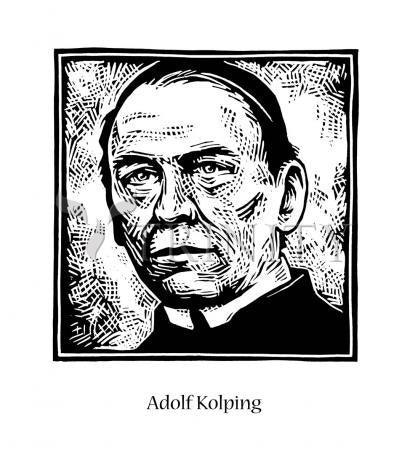Collection: St. Adolf Kolping

-
Sale
Wood Plaque Premium
Regular price From $99.95 USDRegular priceUnit price per$111.06 USDSale price From $99.95 USDSale -
Sale
Wood Plaque
Regular price From $34.95 USDRegular priceUnit price per$38.83 USDSale price From $34.95 USDSale -
Sale
Wall Frame Espresso
Regular price From $109.95 USDRegular priceUnit price per$122.17 USDSale price From $109.95 USDSale -
Sale
Wall Frame Gold
Regular price From $109.95 USDRegular priceUnit price per$122.17 USDSale price From $109.95 USDSale -
Sale
Wall Frame Black
Regular price From $109.95 USDRegular priceUnit price per$122.17 USDSale price From $109.95 USDSale -
Sale
Canvas Print
Regular price From $84.95 USDRegular priceUnit price per$94.39 USDSale price From $84.95 USDSale -
Sale
Metal Print
Regular price From $94.95 USDRegular priceUnit price per$105.50 USDSale price From $94.95 USDSale -
Sale
Acrylic Print
Regular price From $94.95 USDRegular priceUnit price per$105.50 USDSale price From $94.95 USDSale -
Sale
Giclée Print
Regular price From $19.95 USDRegular priceUnit price per$22.17 USDSale price From $19.95 USDSale -
Custom Text Note Card
Regular price From $300.00 USDRegular priceUnit price per$333.33 USDSale price From $300.00 USDSale
ARTIST: Julie Lonneman
ARTWORK NARRATIVE:
The son of a shepherd, Adolf Kolping was raised in poverty in rural Germany. To help support his family, he left school at 13 to become an apprentice to a shoemaker, but he longed for higher education. After ten years of working as a shoemaker, he entered secondary school at age 23 and managed to complete his education in record time.
During his years at the secondary school he felt called to become a priest. He began his studies in theology at the University of Munich in 1841. Ordained in 1845, he dedicated himself to improving family life, and to aiding workers physically and spiritually during the challenging and often dehumanizing milieu of the industrial revolution.
“The first thing that a person finds in life and the last to which he holds out his hand, and the most precious that he possesses, even if he does not realize it, is family life.”
—Saint Adolf Kolping
Germany, 1813-1865.
His feast day is December 6.
- Art Collection:
-
Holy Ethnic Images,
-
Saints & Angels
- Lonneman collection:
-
Models of Faith
Kolping grew up as the son of a shepherd. At the age of 13 he went to Cologne as a shoemaker's assistant. He was shocked by the living conditions of most people living there, which influenced his decision to become a priest. At age 23 he attended a Gymnasium (German secondary school) and afterwards studied theology in Munich, Bonn and Cologne.
On April 10, 1845 he was ordained a priest in Cologne's Minoritenkirche. First he worked in Elberfeld (now part of Wuppertal) as a chaplain and religion teacher.
In 1847 he became the second president of the Catholic Association of Journeymen (founded the preceding year by Johann Gregor Breuer), which gave young journeymen religious and social support.
In 1849 he returned to Cologne as vicar of the cathedral and established Cologne's Association of Journeymen. He united the existing journeymen associations as the Rheinischer Gesellenbund ("Federation of Journeymen of the Rhine Region") in 1850. This fusion was the origin of today's international Kolpingwerk. Until his death he labored to spread the federation of journeymen associations. By the year of his death, 1865, there were more than four hundred journeymen associations worldwide.
In 1854, Kolping founded the weekly newspaper Rheinische Volksblätter ("Rhine Region People's Paper"), which quickly became one of the most successful press organs of his time. In 1862, he became the rector of Saint Maria Empfängnis Church.
In Germany today, The International Kolping Society has more than 275,000 members in 2,730 local Kolpingsfamilien ("Kolping families"), making it the largest social federation in the country. The organization, based in Cologne, is represented in 59 countries with more than 470,000 members around the world, divided into about 5,000 Kolpingsfamilien. He is buried in the Minoritenkirche.
Born: December 8, 1813 at Kerpend, Germany
Died: December 4, 1865 at Cologne, Germany of natural causes; buried in the Church of the Minor Friars, Saint Maria Empfängnis, Cologne
Venerated: May 13, 1989 by Pope John Paul II
Beatified: October 27, 1991 by Pope John Paul II in Rome, Italy


















